The customer journey is the process of moving customers from casual observers to loyal advocates. With all of the touch points available along the journey, there are lots of ways to use your referral program to keep customers moving forward.
There are five stages in the journey: awareness, consideration, purchase, retention, and advocacy:
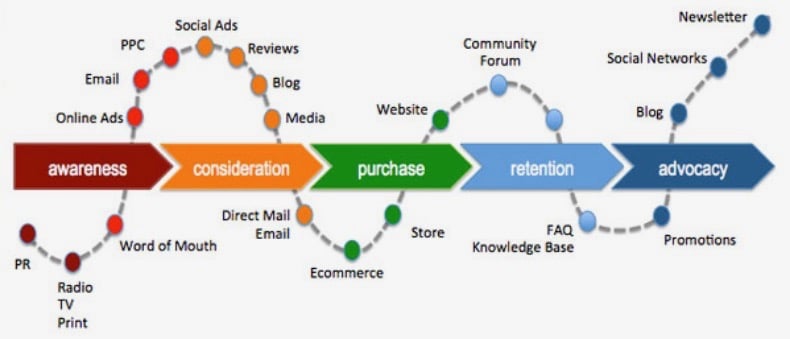
[Source] The customer journey and examples of its touch points
We’re going to focus on customers in the last three stages of the customer journey: purchase, retention, and advocacy. These are customers who’ve purchased something, experienced value, and are the most likely to share referral links within their networks.
With the variety of digital solutions available today, it’s easy to default to placing referral links on websites and on social media platforms. There’s no doubt that these placements are valuable but, keep in mind, you can also use non-tech ways to engage with customers.
Here are 10 online and offline ways to promote referral links based on stages of the customer journey.
Referral links in the purchase stage
Customers in the purchase stage of the customer journey have gone through the decision-making process. By now they’ve narrowed down their options and have chosen your brand. This decision hinges on two things:
- The types of touch points you offer
- Your ability to convince your audience that you have the best solution to their problem
Customers are still excited about their purchase and experience so far. Use this opportunity to introduce your referral program and their personal referral link. Places to put your referral links include:
1. In-store promotional material
A quick and easy way to promote your referral program within your brick-and-mortar store is with printed promotional material. Use it to explain the program and encourage new customers to head to your website to get their unique referral link.
The referral program can be part of an in-store promotion where customers don’t only save in-store but they also have a chance to save more when they refer friends and family.
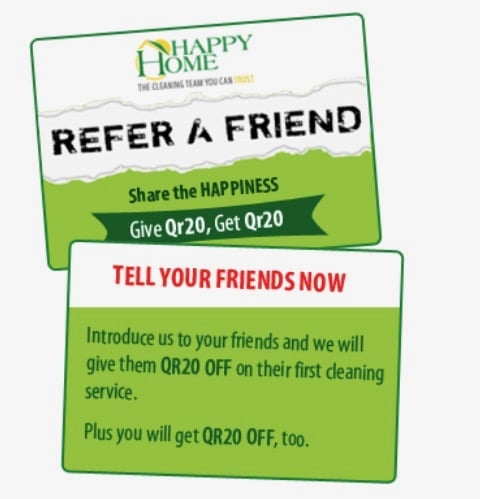
[Source]
In addition to sharing promotional materials in-store, share them at industry events and shows – anywhere you’ll have a chance to interact with new customers. This way you can talk about the benefits of the referral program in-person with new customers. They’ve just bought something, so this reinforces their decision and gives them a chance to share their experience with their network.
2. On printed receipts
Another in-store option is to include a referral link at the bottom of receipts. Every time a customer makes a purchase, ask sales reps to highlight where on the receipt the personalized referral link is and remind customers to share.
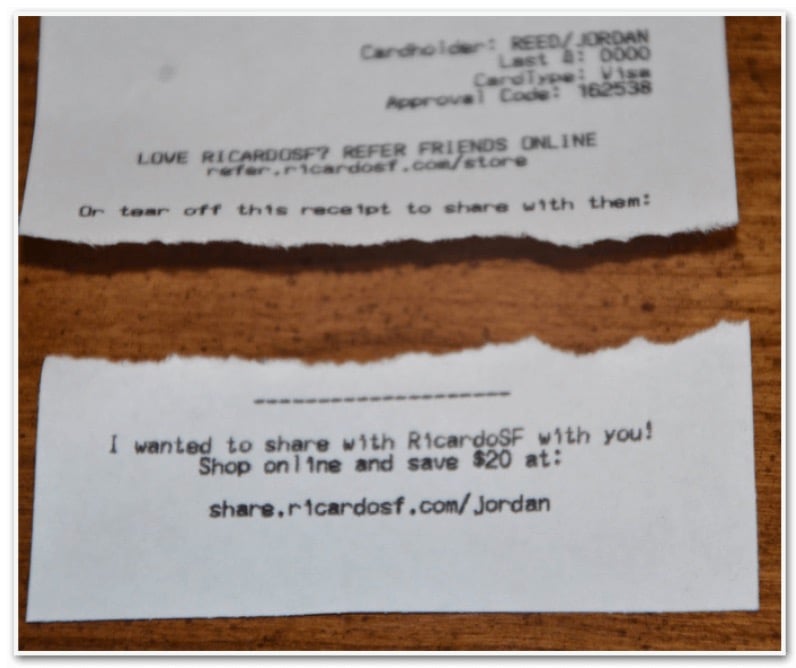
Highlight the offer and invite new customers to share the link with their network. For example, to make sharing the referral link easy, encourage new customers to take a picture of their receipt, share it on social media, and tag you in the caption or comments so you can track customer follow-through and how responsive their networks are.
This approach also gives you access to user-generated content you can share with other advocates when you run reminder campaigns to boost advocate engagement.
3. On your mobile e-commerce site
After new customers complete their purchase online using their phone, give them the option to share their referral link. Let customers use the native sharing function on their phones so they’re flexible to share on any platform they choose based on where they spend the most time online.
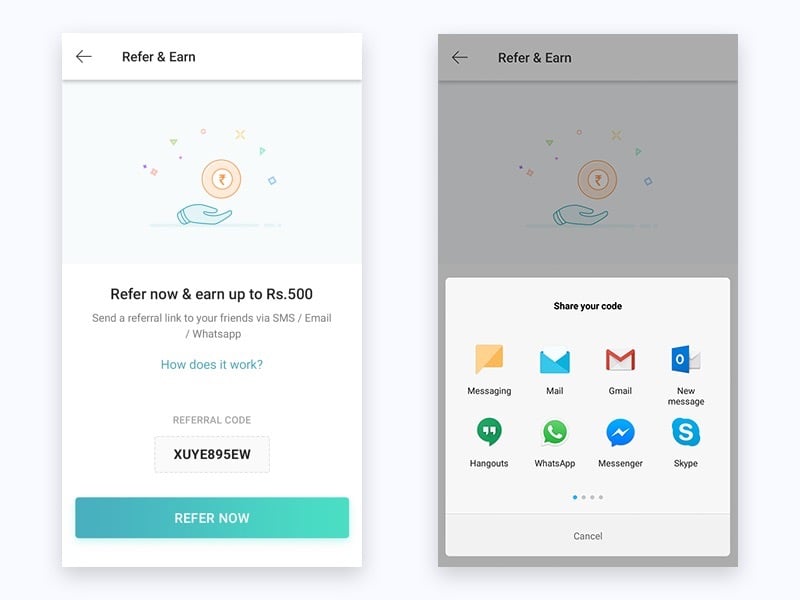
[Source]
This approach makes it convenient for them to share. In fact, earlier this year Facebook reported that 2.5 billion people use at least one of their apps: Facebook, Messenger, WhatsApp, and Instagram.
So even if your advocates use multiple platforms, they have the option to share their referral link on any of them.
4. in Post-purchase emails
For customers who purchase from your e-commerce store using desktop, use the order confirmation page to give them a chance to share their referral link.
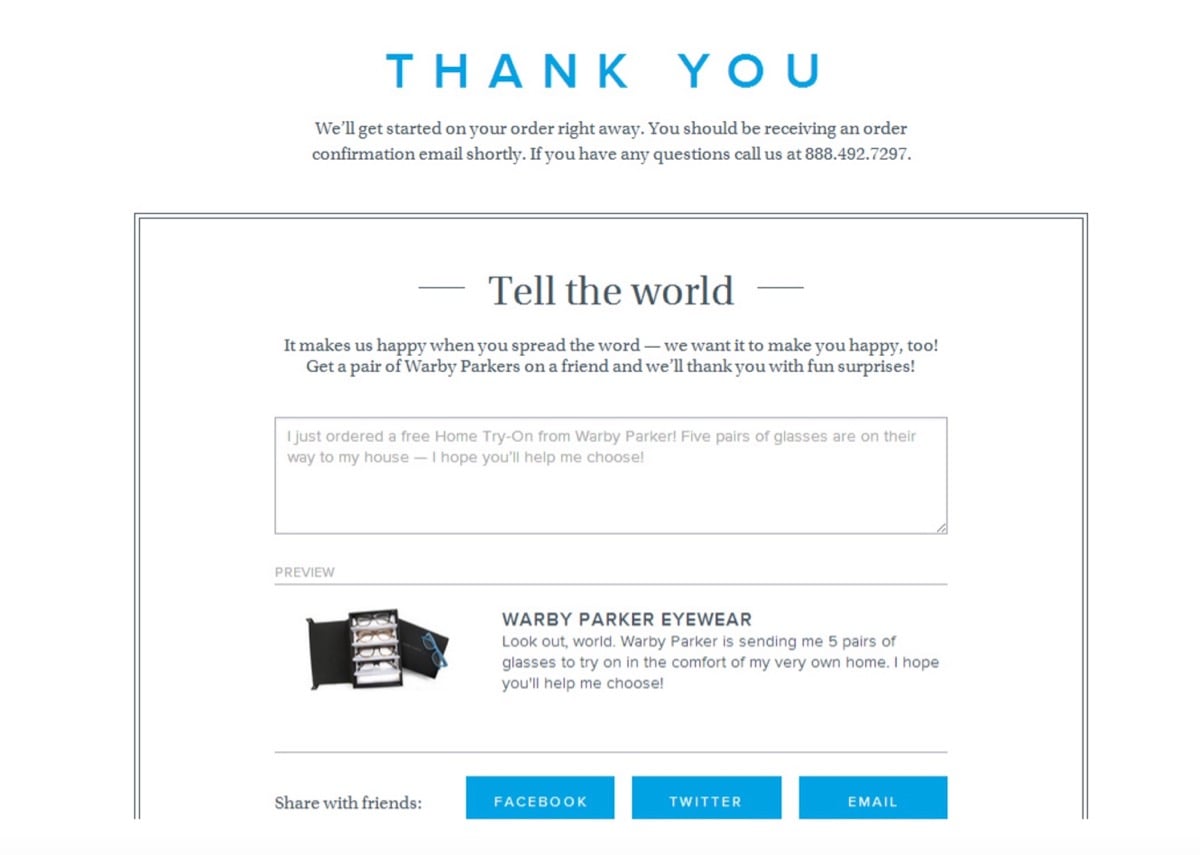
[Source]
At this point, customers are excited about their purchase and feel good about the experience so far. Use this opportunity to encourage them to share about their recent purchase.
Like the Warby Parker example above, let new customers add in a personal note when they share their experience. Remember, people are 4X more likely to purchase based on a referral from someone they know, so allowing advocates to share details improves your customer acquisition efforts.
Also, include sharing links to make it quick and easy for customers to follow through. Based on where your audience spends time online, use this to decide which social media sharing buttons to include.
5. In order status emails
After customers buy something, there’s typically a confirmation email sent to them afterward. This type of email is more than just a summary of a recent purchase; it’s also your chance to reinforce a positive customer experience.
In addition to summarizing the purchase and sharing the estimated delivery date, use your confirmation email to reiterate the value and benefits customers are getting from their new purchase and to also invite them to share this experience – using a referral link – with their network.
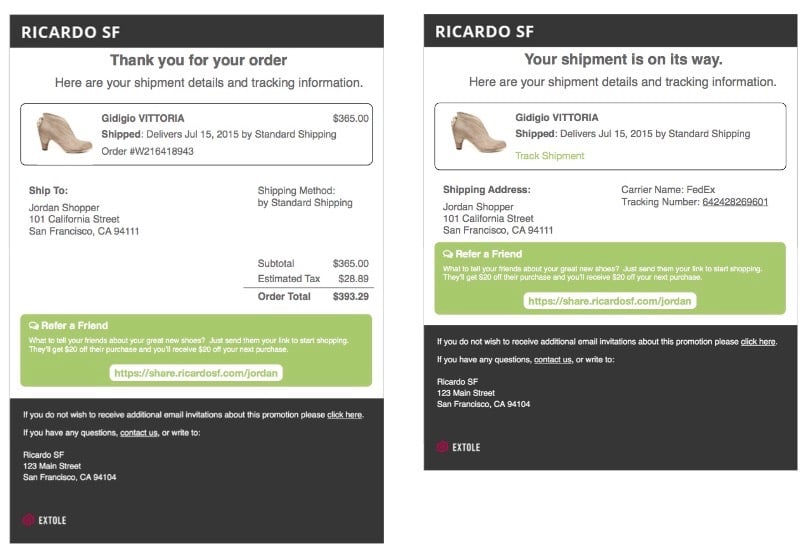
Another way to send order confirmations is through text. You can use rich media messaging to summarize the purchase and include an option for customers to share their referral link from their phone.
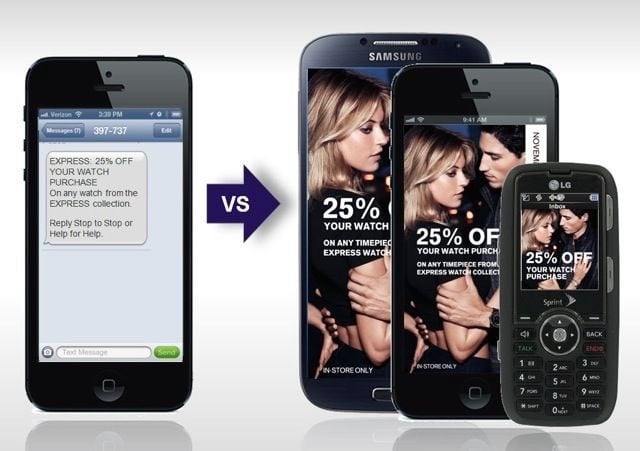
[Source] Instead of plain text messages, use rich text media to make sending referral links more engaging.
Place referral links in the retention stage
Customers at this stage of the customer journey expect their needs to be consistently met and their expectations exceeded. Your ability to do this ensures that you retain more customers and move them to the next stage of the customer journey – advocacy and loyalty.
The benefit to sharing referral links at this stage is to keep customers engaged and excited to keep buying. The more they’re willing to buy, the more chances they have to save with each referral they make. Places to put your referral links include:

Referral Marketing – The Best Practices You Need to Know
Written by veteran referral marketers, this guide will help you optimize your referral marketing program and supercharge growth.
Get the Guide6. In your product marketing emails
Remind customers about your referral program every time you send a marketing or promotion email. In addition to the marketing content in the body of the email, include a link to the referral program at the bottom of the email.
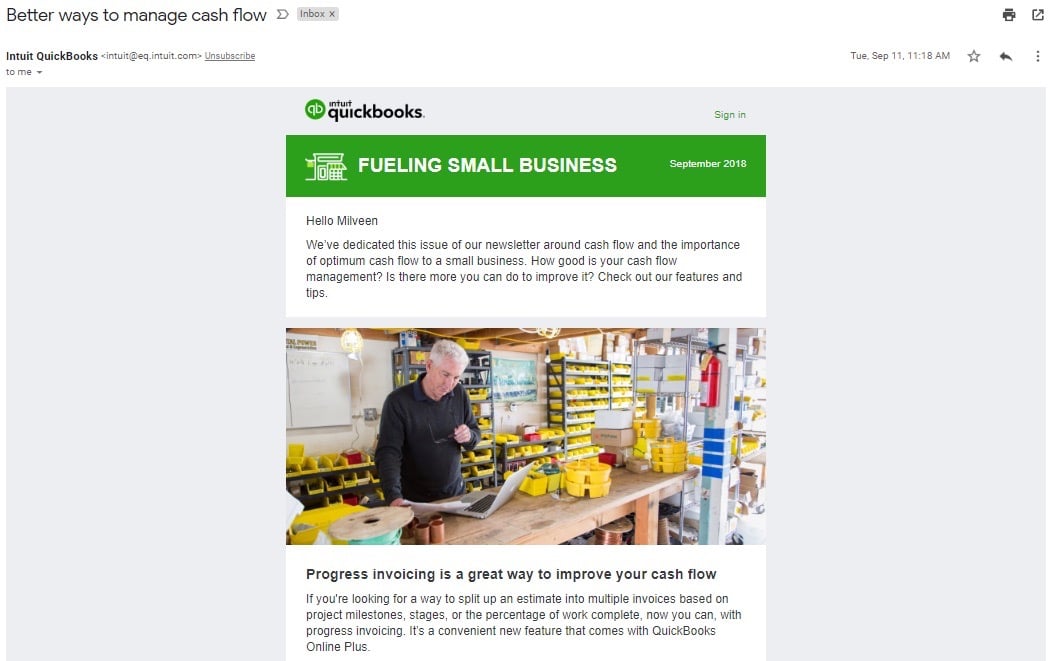
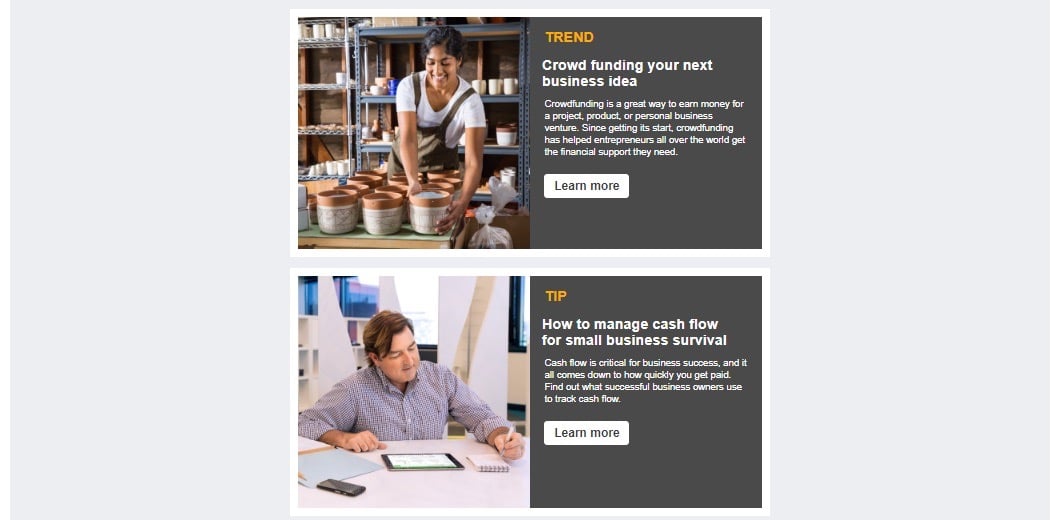

You can even go one step further and segment your customer list so that advocates who have referred customers in the past can see a high-level snapshot of their referrals to date. This summary acts as encouragement to remind advocates to keep sharing and saving.
For the segment of customers who haven’t used their referral link yet, use your promotional email to reiterate how the referral program works and guide them through getting started.
7. In your mobile app
If you have a mobile app, include a link or dedicated page within an app for referrals.
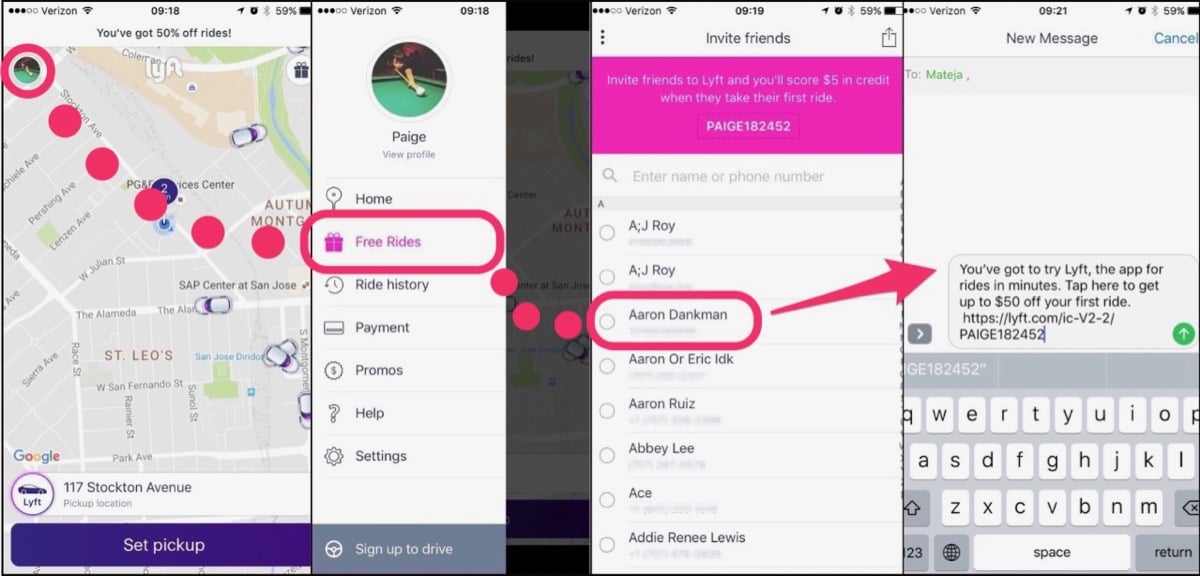
Gamify the customer experience with a scoreboard for tracking and push notifications to keep customers engaged and willing to keep sharing.
Just like in this Lyft example, pre-populate the share message for easy sharing.
Place referral links in the advocacy stage
Customers who continue to come back and buy from the same brand have made it to the final stage on the customer journey – advocacy. These customers know you and your product well and are the best group of customers to ask for a referral.
Consider the type of referral program you’ll use to encourage these advocates to share. For example, offer different types of reward systems or create a tracking system to help customers track their shares and rewards to date. Get creative to keep them engaged.
8. On the outside of delivered packages
Customize your product packaging to include references to your referral program.
Again, encourage advocates to take pictures of their delivery and share it on social media. The key here is to develop something novel to excite customers who’ve been around for a long time and have already seen most of the promotional material you’ve shared.
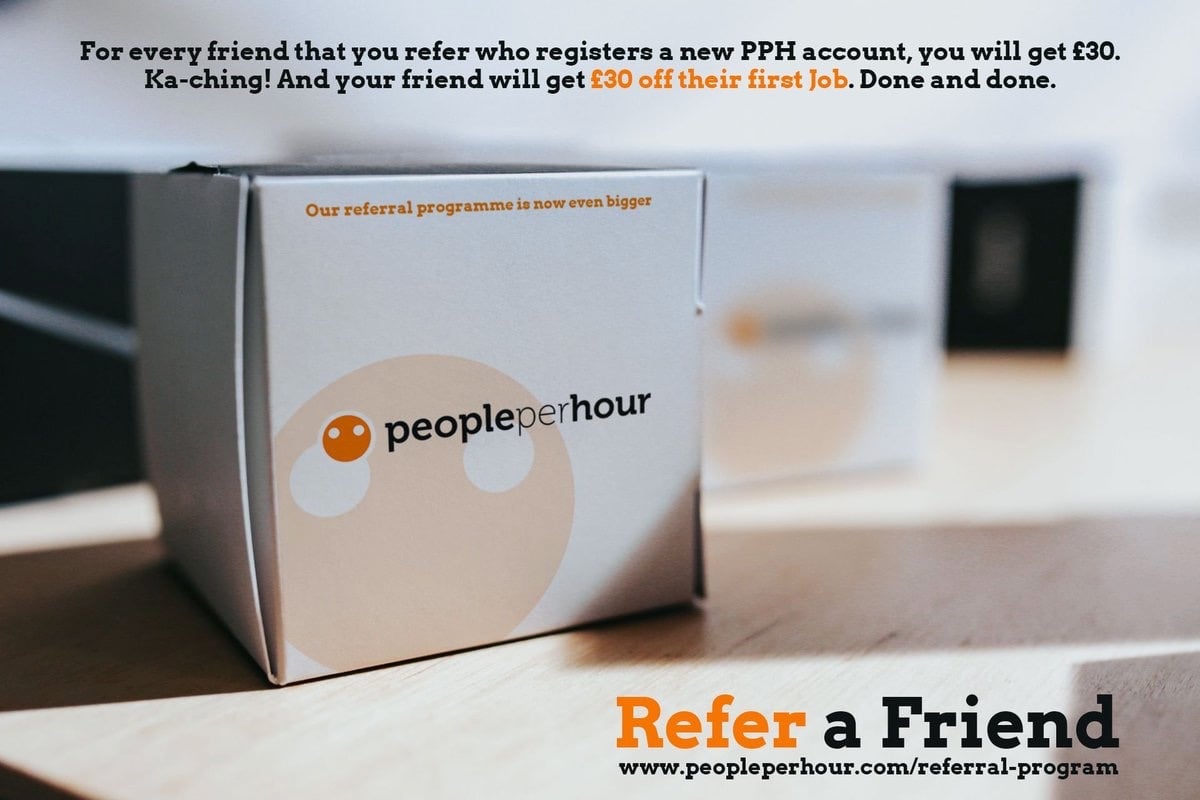
[Source]
Let’s use the above promotion from PeoplePerHour.com as an example. To announce their updated referral program, PeoplePerHour.com shared this image of packaging on Twitter. While they don’t sell a physical product – they’re more of a job bank for freelancers – you can use this tactic to promote your referral program and encourage advocates to share their referral link.
Using packaging to share your program has two benefits:
- Your packaging becomes recognizable to customers
- Customers who don’t see your social media posts will have their curiosity piqued when their package arrives
Depending on your budget, an alternative to custom packaging is to add custom stickers and labels to each package you ship.
9. Inside delivered packages
Include inserts inside delivered orders to remind customers of the referral program and potential future savings.
Meal kit delivery services are a good example of how to nurture loyal customers. Returning customers receive referral cards within their deliveries to share with friends and family. Advocates get a discount when their referred customer buys their first box.

[Source]
Each card has a unique code linked to the advocate’s account. Use the resulting data to send advocates an update, once a month, about how many referred customers have bought something and how much the advocate has saved.
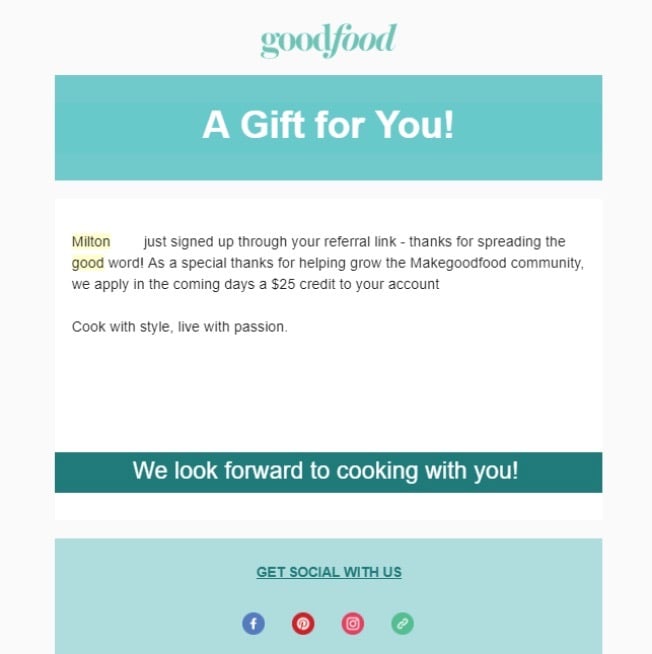
10. in customer support follow-up
Use your support interface to prompt agents to tell customers who call in about the chance to earn savings by sharing their referral link.
Back up this prompt further by including the referral link in the issue resolution email you send afterward. The goal here is to use the success of the customer support call to ask advocates to share a referral.
Let’s say a customer calls into support because their delivery is delayed. You might send an email like the one below to follow up after the delivery and mention your referral program:
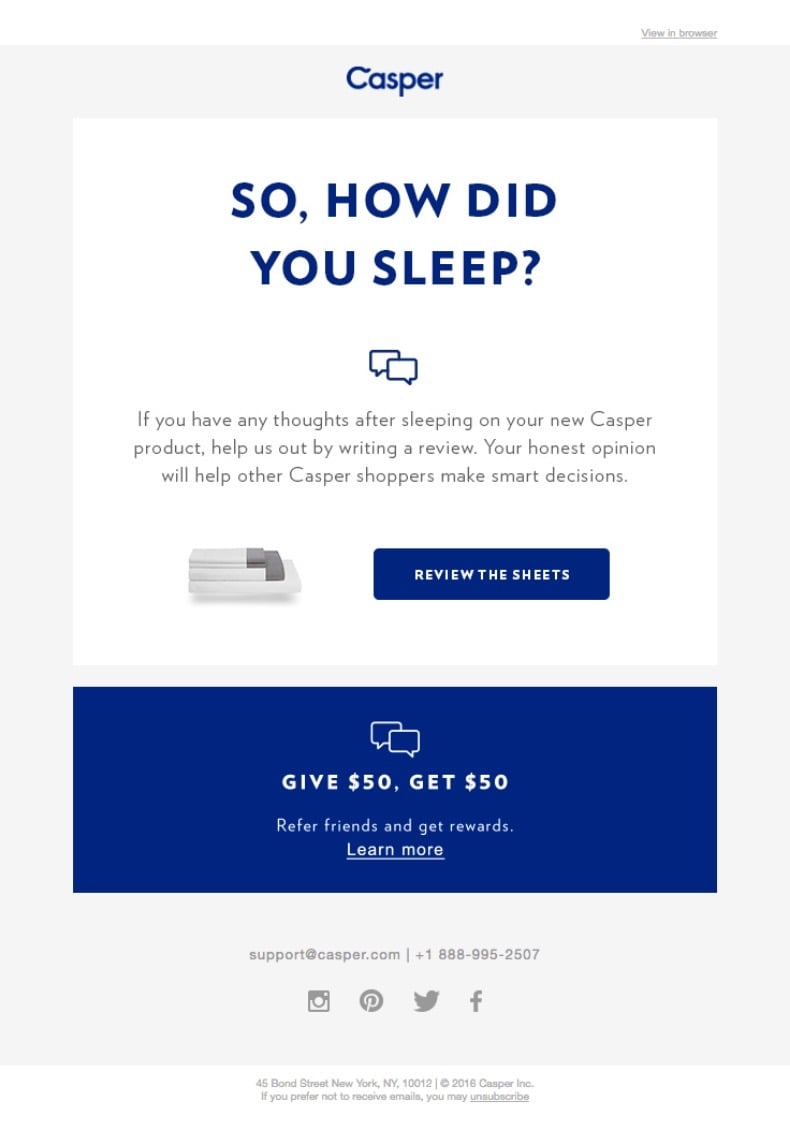
You’ve proactively reached out to customers to ensure a positive experience instead of waiting for customers to call in again. Plus, as a return customer, they may be more open to sharing their referral link with their network.
Get creative with referral link placement
As you can see, there are many ways – both online and off – to engage with customers and promote your referral program. Based on where your customers are in the customer journey, create campaigns based on these ideas and test out which tactics work best. Add and adjust as you see fit until you’ve found the best way to engage customers and convince them to share their referral link.



